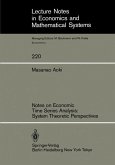Seminar paper from the year 2011 in the subject Economics - Statistics and Methods, grade: 1,0, University of applied sciences, Munich, course: Research Methods, language: English, abstract: In this paper the historical and theoretical background of the factor analysis is briefly explained. Principal Component Analysis (PCA) and Principal Axis Factoring (PAF) are applied to a data set which has been generated in the scope of the evaluation of the implementation of Company X's corporate Strategy XX. The results clearly indicate that structural parts of the data collection instrument could be reproduced by the empirical data.The primary factors resulting from an orthogonal respectively oblique rotation are comparable but also show slight differences. Latent constructs like "Trust", "Job Satisfaction" "Disengagement" and "Pessimism" are indicated by the results. Secondary factors indicate a negative relationship between disengagement and leadership respectively transparency concerning the corporate strategy and job satisfaction. Also aspects of "state negativity" can be identified. This means that a general pessimistic attitude is related to a more pessimistic view on realized customer focus. The application of more elaborated methods would be needed to identify causal relationships.








